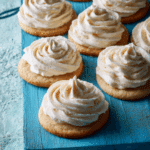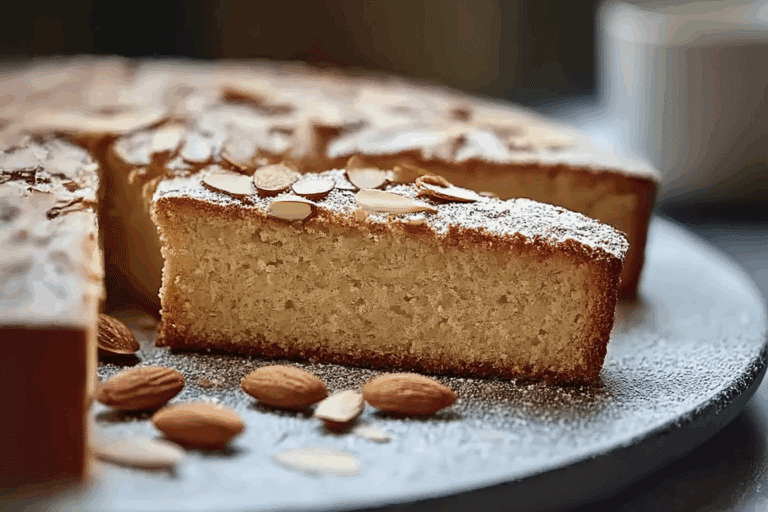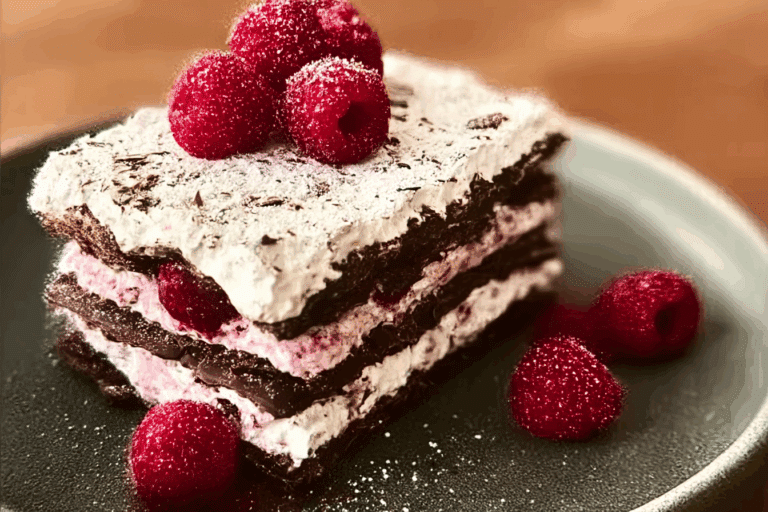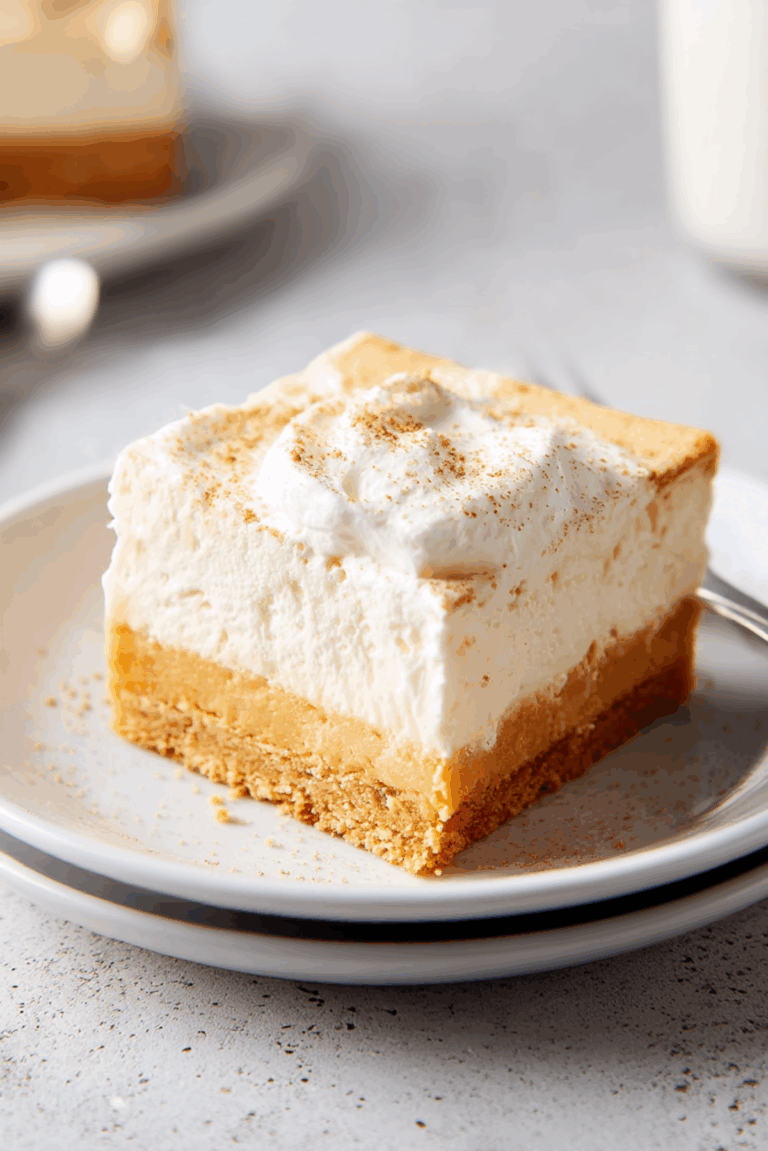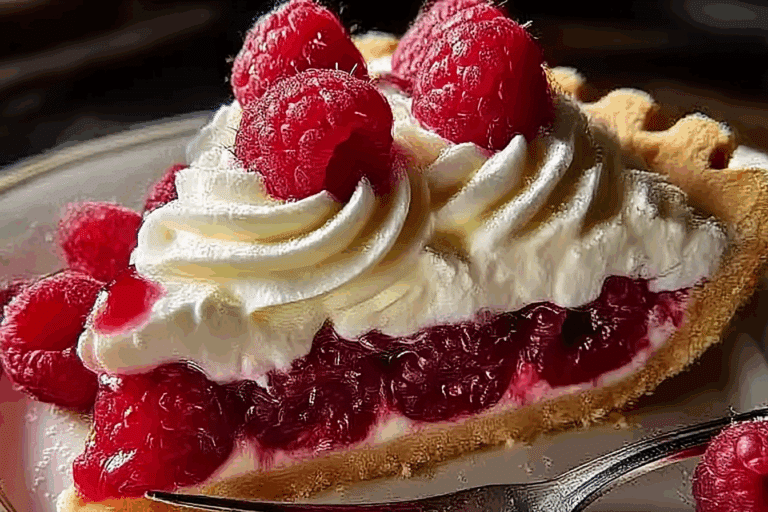Shortbread Cookies
Few things can match the pure, buttery joy of biting into a classic shortbread cookie. With its melt-in-your-mouth texture and delicately sweet flavor, this humble treat has a way of making any moment feel a little more special. Whether paired with a hot cup of tea or served as a sweet ending to a cozy dinner, shortbread cookies are a timeless indulgence worth savoring.
Behind the Recipe
This recipe brings back memories of my grandmother’s kitchen, where the scent of freshly baked cookies always lingered in the air. She’d pull out her worn tin of cookie cutters and let us shape the dough into hearts, stars, and sometimes even clumsy little animals. These cookies were always part of family gatherings, wrapped in wax paper and tied with string. They remind me of soft laughter, mismatched mugs of cocoa, and feeling completely at home.
Recipe Origin or Trivia
Shortbread hails from Scotland, where it was once considered a luxury treat reserved for festive occasions like weddings and Christmas. Originally made with leftover bread dough, it evolved into a rich, buttery cookie once butter replaced yeast in the recipe. The name itself reflects its texture — “short” refers to the crumbly consistency, which is the result of a high fat content. Traditionally, it’s cut into wedges, fingers, or circles and pricked with a fork to ensure even baking.
Why You’ll Love Shortbread Cookies
Let’s be honest, these cookies are dangerously good. Here’s why they deserve a permanent spot in your baking routine:
Versatile: Serve them plain or dress them up with chocolate drizzle or a dusting of powdered sugar.
Budget-Friendly: Made with pantry staples, they deliver gourmet flavor without the gourmet price.
Quick and Easy: No fancy techniques, no chill time, just mix, shape, and bake.
Customizable: Add citrus zest, spices, or even dip them in chocolate to suit your taste.
Crowd-Pleasing: Everyone loves them, from toddlers to grandpas. Trust me.
Make-Ahead Friendly: These cookies store beautifully and are perfect for gifting.
Great for Leftovers: Crumble them over ice cream or layer them into trifles.
Chef’s Pro Tips for Perfect Results
Want that bakery-quality shortbread experience? Keep these in mind:
- Use Cold Butter: It helps create that signature crumbly texture.
- Don’t Overwork the Dough: Mix until just combined to avoid toughness.
- Chill if Needed: If your kitchen is warm, pop the dough in the fridge for 10 minutes before rolling.
- Even Thickness: Roll dough evenly for uniform baking.
- Low and Slow Bake: Bake at a lower temperature to prevent browning and keep the cookies pale and tender.
Kitchen Tools You’ll Need
You don’t need much to create cookie magic. Just a few essentials:
Mixing Bowl: For combining the dough ingredients smoothly.
Hand Mixer or Stand Mixer: To cream butter and sugar to fluffy perfection.
Measuring Cups and Spoons: Accuracy is key for the best texture.
Rolling Pin: For flattening the dough evenly.
Cookie Cutter or Knife: Shape your cookies any way you like.
Baking Sheet: Line it with parchment paper for easy cleanup.
Cooling Rack: Helps prevent sogginess as they cool.
Ingredients in Shortbread Cookies
This simple list is a symphony of comfort and flavor. Each element plays a vital role in the final masterpiece.
- All-Purpose Flour: 2 cups — The foundation of your cookie, providing structure and light crispness.
- Unsalted Butter: 1 cup (softened) — The heart of the cookie, delivering that rich, tender crumb.
- Granulated Sugar: ½ cup — Sweetens the dough without overpowering it.
- Vanilla Extract: 1 teaspoon — Adds depth and warmth to the flavor profile.
- Salt: ¼ teaspoon — Balances the sweetness and enhances every bite.
- Cornstarch: ½ cup — Lightens the texture for that signature melt-in-your-mouth feel.
Ingredient Substitutions
Life happens. Here’s how to adapt:
Unsalted Butter: Use salted butter, just omit the added salt.
Vanilla Extract: Try almond extract for a nutty twist.
Cornstarch: Replace with an equal amount of additional flour, though texture may be slightly less tender.
Ingredient Spotlight
Butter: The star of the show, butter gives shortbread its decadent richness and crumbly bite. Use the best quality you can find.
Cornstarch: Often overlooked, cornstarch ensures your cookies have that soft, sandy texture that crumbles just right.
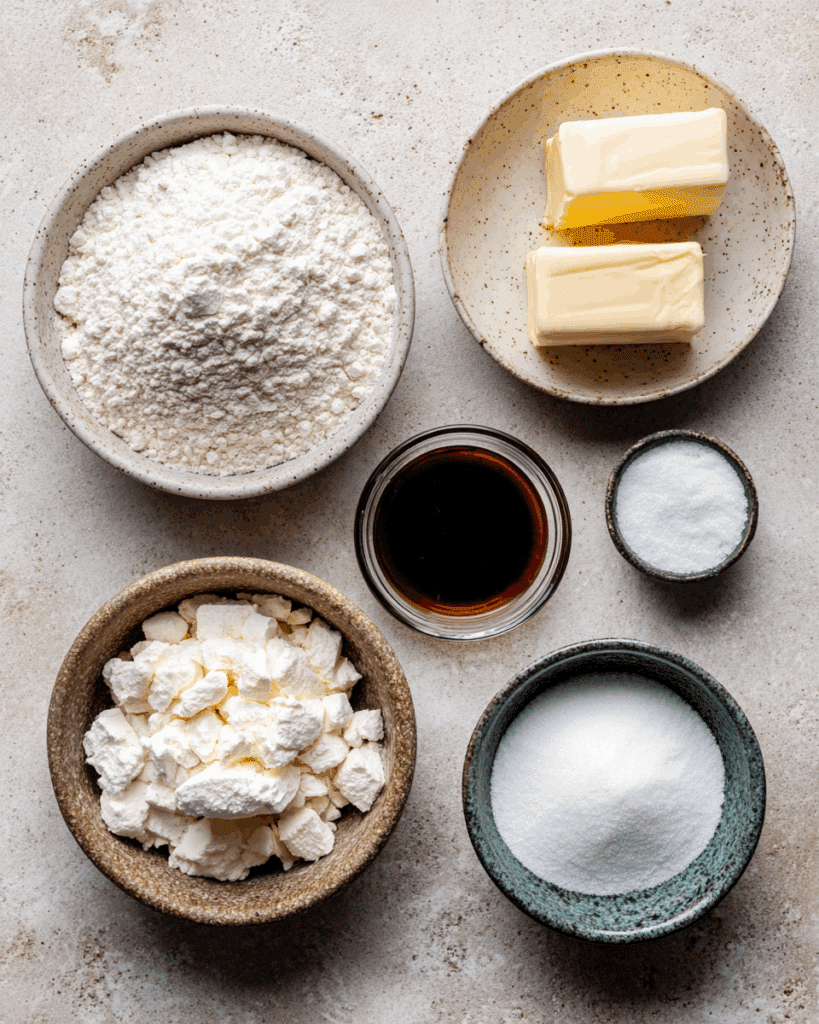
Instructions for Making Shortbread Cookies
Baking shortbread feels a bit like therapy — slow, gentle, and oh-so-rewarding. Here’s how it’s done:
- Preheat Your Equipment:
Set your oven to 325°F (165°C). Line a baking sheet with parchment paper and set aside. - Combine Ingredients:
In a mixing bowl, cream the softened butter and sugar until light and fluffy. Mix in the vanilla extract. In a separate bowl, whisk together the flour, cornstarch, and salt. Gradually add the dry mixture to the butter mixture, blending just until a soft dough forms. - Prepare Your Cooking Vessel:
Lightly flour your work surface and rolling pin to prevent sticking. - Assemble the Dish:
Roll out the dough to about ½-inch thickness. Cut into shapes using cookie cutters or a knife. Transfer to the prepared baking sheet. - Cook to Perfection:
Bake for 15 to 18 minutes, or until the edges are just beginning to turn golden. The tops should remain pale. - Finishing Touches:
Allow cookies to cool on the sheet for 5 minutes, then transfer to a wire rack. Dust with powdered sugar if desired. - Serve and Enjoy:
Enjoy with tea, coffee, or simply on their own. These cookies are perfect anytime.
Texture & Flavor Secrets
Shortbread cookies are all about contrasts — crumbly but not dry, rich but not heavy, sweet yet buttery. The cornstarch lightens the bite, while real butter melts into each layer. The result is a cookie that snaps gently, then melts effortlessly on the tongue.
Cooking Tips & Tricks
Every baker has a few tricks up their sleeve. Here are mine:
- Use room temperature butter for easy creaming.
- Weigh your flour for precision.
- Avoid overbaking — pale is perfect with shortbread.
- Store in an airtight container to keep that crispness alive.
What to Avoid
Shortbread is forgiving, but there are a few pitfalls to dodge:
- Overmixing: Can lead to tough cookies.
- High oven temp: Will brown the cookies too quickly.
- Warm dough: Makes it hard to shape. Chill if needed.
Nutrition Facts
Servings: 24 cookies
Calories per serving: 150
Note: These are approximate values.
Preparation Time
Prep Time: 15 minutes
Cook Time: 18 minutes
Total Time: 33 minutes
Make-Ahead and Storage Tips
Shortbread cookies are make-ahead champs. You can mix and shape the dough in advance, then freeze it for up to a month. Baked cookies keep well in an airtight container at room temperature for up to a week. Want to keep them longer? Freeze baked cookies and thaw at room temp before serving.
How to Serve Shortbread Cookies
These cookies are lovely solo, but they shine even brighter with pairings. Serve with lemon curd or jam, dip half in dark chocolate, or stack them with a smear of Nutella in between. They also make charming gifts when tied in ribboned bundles.
Creative Leftover Transformations
Have extras? Crumble cookies into a base for cheesecake or use them in a layered parfait with whipped cream and berries. You can even pulse them into a crust for a tart or pie.
Additional Tips
- Add orange or lemon zest to the dough for brightness.
- Drizzle with melted chocolate for elegance.
- Sprinkle sea salt on top for a sweet-savory twist.
Make It a Showstopper
Presentation matters. Stack cookies on a cake stand or layer them in a glass jar. Add edible flowers or a dusting of powdered sugar for charm. Using shaped cutters? Tie a ribbon around a stack for gift-ready appeal.
Variations to Try
- Lemon Shortbread: Add 1 tablespoon of lemon zest to the dough.
- Chocolate-Dipped: Dip half of each cookie in melted chocolate.
- Spiced Shortbread: Mix in cinnamon and nutmeg for a cozy version.
- Lavender Shortbread: Add dried culinary lavender for floral notes.
- Espresso Shortbread: Stir in 1 teaspoon of instant espresso powder.
FAQ’s
Q1: Can I make these cookies gluten-free?
Yes, use a 1:1 gluten-free flour blend that includes xanthan gum for structure.
Q2: Why did my shortbread turn out tough?
Overmixing can develop gluten, making them chewy instead of crumbly.
Q3: How should I store the cookies?
In an airtight container at room temperature for up to 7 days.
Q4: Can I freeze the dough?
Absolutely. Shape the dough, freeze, and bake directly from frozen.
Q5: What butter is best?
High-quality unsalted butter makes a big difference in flavor.
Q6: Can I add nuts or chocolate chips?
Yes, just keep add-ins small and mix gently into the dough.
Q7: Can I skip the cornstarch?
Yes, but the cookies may be less tender and melt-in-your-mouth.
Q8: Why are they called shortbread?
“Short” refers to the crumbly texture, thanks to the high fat content.
Q9: Should they be browned?
No, shortbread should remain pale on top with only slightly golden edges.
Q10: Can kids help with this recipe?
Absolutely. They’ll love cutting shapes and sprinkling sugar on top.
Conclusion
Shortbread cookies are more than just a treat. They’re a reminder of slow afternoons, buttery fingers, and the magic of baking something simple and perfect. Whether you’re sharing them or sneaking one quietly with your morning coffee, these cookies will quickly become your go-to comfort bake. Trust me, they’re worth every bite.
PrintShortbread Cookies
Classic shortbread cookies that melt in your mouth with every bite. Buttery, tender, and perfectly sweetened, they’re a timeless favorite for any occasion.
Ingredients
- 2 cups all-purpose flour
- 1 cup unsalted butter (softened)
- 1/2 cup granulated sugar
- 1 teaspoon vanilla extract
- 1/4 teaspoon salt
- 1/2 cup cornstarch
Instructions
- Preheat your oven to 325°F (165°C) and line a baking sheet with parchment paper.
- Cream the softened butter and sugar in a mixing bowl until light and fluffy. Mix in the vanilla extract.
- In a separate bowl, whisk together flour, cornstarch, and salt. Gradually mix into the butter mixture until a soft dough forms.
- Lightly flour your work surface and roll out the dough to 1/2-inch thickness. Cut into desired shapes and place on the baking sheet.
- Bake for 15 to 18 minutes until the edges are just golden. Tops should remain pale.
- Cool on the baking sheet for 5 minutes before transferring to a wire rack. Dust with powdered sugar if desired.
Notes
- Use cold butter for a perfect crumbly texture.
- Weigh your flour for the most accurate measurement.
- Chill the dough briefly if it becomes too soft to work with.
- Store in an airtight container for up to one week.


